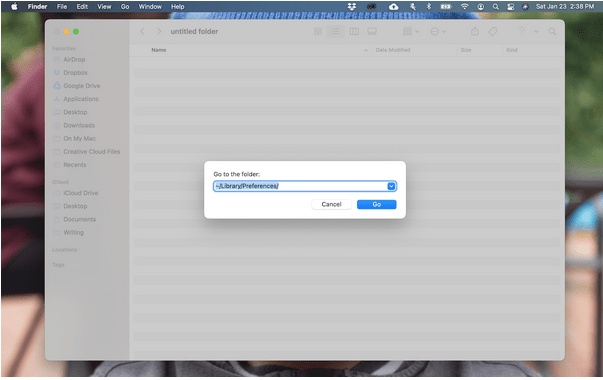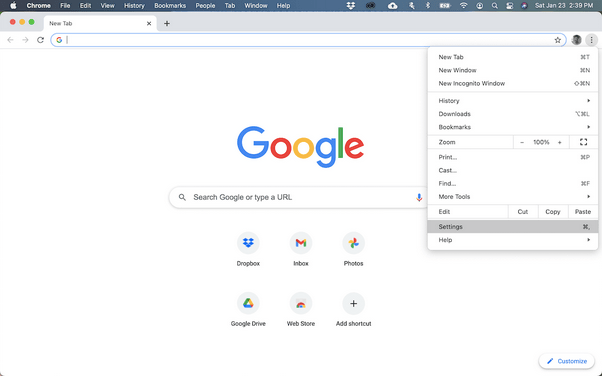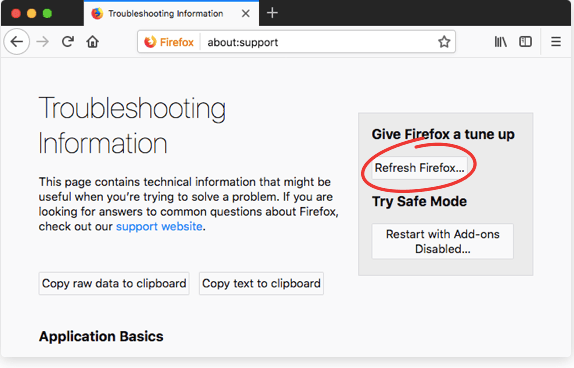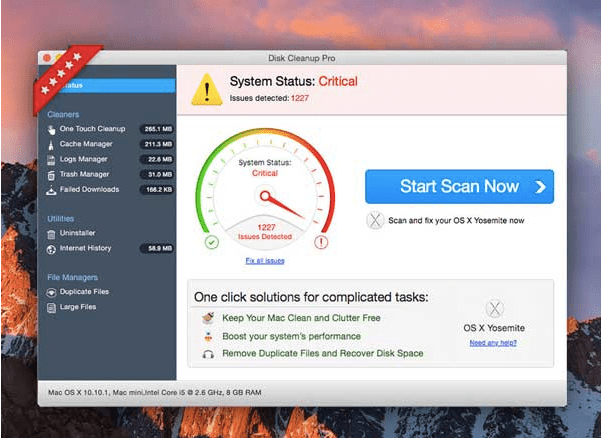Be it viruses, malware, or ransomware attacks, cybercrimes are literally on a rise! With each passing day, cybercriminals are discovering advanced techniques to invade our digital lives. To be less vulnerable to intruders, adapting a strong cybersecurity approach is a must. We must take necessary precautions to reduce the risk of exploitation before we fall victim.

As cybercrime is one of the fastest-growing crimes in today’s era, one needs to make sure that you don’t fall into hackers’ vicious schemes. The 5-billionth search scam is one of them!
The 5-billion scam pops up on the web browser and displays the following message on the screen:
Congratulations! You’ve made the 5-billionth search.
In this post, we will be learning all about what is the 5-billionth scam and how to get rid of this malicious threat from Safari, Chrome, and Firefox.
Also read: EXCLUSIVE: Five Types Of Scams People Must Watch Out For This 2021
Let’s get started.
What is the 5-Billionth Search Scam?
The 5-billionth search scam is a browser-based malicious threat that is imposed by hackers to trick users in. The sole objective of this search scam is to trick you so that the malware gets embedded into your hard disk before you even know it. The 5-billionth is disguised similar to the designs of popular platforms like YouTube or Google, hence appearing more legitimate to catch user’s attention in the first place.

The whole idea of the 5-billionth search scam is to lure users to request their credit card details, address, phone number, or any other personal info to claim the prize. It is more like a malicious advertisement that can crawl in at any instance while you’re browsing the web.
If you’re lucky enough, the malicious adware can go away the moment you close the window. But unfortunately, if your device has been viciously attacked and the malware has already started spreading on your Mac’s disk, then the pop-up will constantly appear each time you open the browser window.
How to Get Rid of the 5-billionth Search Scam on Mac?
There are a couple of workarounds that you can adopt for removing the 5-billionth search scam malware from your Mac. You can either get rid of the search scam manually from each web browser’s settings or use a third-party cleaner tool to get the job done. (Refer to the latter section of the post).
Safari
As Safari is Mac’s default web browser, the search scam hits this particular platform differently. It attacks the web browser in the form of a .plist file that is stored in Safari’s Preferences folder. To remove the 5-billionth search scam from Safari, follow these quick steps:
Quit Safari and all other active windows.
Head on to the main screen of your Mac, head on to Go> Go to Folder. In the search box, type “~/Library/Preferences and press on Go.

In the Preferences folder, look for a file named “com.apple.Safari.plist”. As soon as you locate the file, drag and drop it into the Trash bin.
Exit all windows and then empty the Trash Bin.
After following the above-mentioned steps, relaunch Safari to check if you’re still experiencing any issues.
Also read: 8 Best Ad Blockers For Safari Browser in 2021
Google Chrome
To remove the 5-billionth search scam from the Google Chrome browser, you will need to restore the web browser to its default settings. Follow these quick steps:
Launch Chrome on your Mac. Tap the three-dots icon placed on the top menu bar, select “Settings”.

In the Settings window, scroll down and tap the “Advanced” button.
Tap on the “Reset Settings” option.
Quit all windows and relaunch Chrome to see if the scam pop-up is still appearing on the screen.
Also read: How To Uninstall Google Chrome On Mac
Firefox
To restore Firefox to its default settings, here’s what you need to do.
Launch Firefox. Tap the three horizontal lines icon to open Settings.
Navigate to Help > Troubleshooting Information. Hit the “Refresh Firefox” button to restore it to its default settings.

As soon as you hit the “Refresh Firefox” button, Firefox will automatically shut down and relaunch on your device.
Also read: How To Troubleshoot When Firefox Keeps Crashing?
Download Disk Clean Pro On Your Mac
Don’t wish to follow the long way round to remove the 5-billionth search scam from your Mac? Well, we have an easy alternative for you! Download and install the Disk Clean Pro utility on your Mac to keep it optimized and enhance overall productivity.

Disk Clean Pro is a wonderful cleaner, optimizer, and security tool that helps users to detect and remove junk files, cache files, user log files, duplicate files, uninstall applications, privacy traces and more. This nifty tool will not only help in enhancing your Mac’s performance but will also recover chunks of storage space for storing other valuable data on your Mac.
Download and install the Disk Clean Pro on your Mac > Launch the app > Initiate the scanning process and then just sit back and relax until the tool gets the cleaning & optimization job done.
Read full review of Disk Clean Pro here.
Also read: How to Cleanup Mac Hard Drive and Recover Storage Space
Faqs
Is the Safari 5 billionth search Prize real?
No, it’s a scam! If you see the “Congratulations, you’ve made the 5-billionth search, click here to claim your prize” message on the screen then don’t fall trap! It’s just one of the hacker’s deceptive schemes to lure your credit card details and other sensitive info.
How do I stop the 5 billionth search scam on the iPhone?
First, close the active tab and then quit the web browser on which you’re currently browsing. Once you’re done, uninstall the browser app and reinstall it from the App Store. In this way, you can easily get rid of the cache files and junk data stored on your device.
How do I get rid of Google’s 5 billionth search?
To get rid of Google’s 5-billionth search scam you can either make changes to the web browser’s settings and restore it to factory settings. You can use any of the above-mentioned methods to remove the 5-billionth search scam from your Mac.
Was this post helpful? Please feel free to share your thoughts in the comments space!



 Subscribe Now & Never Miss The Latest Tech Updates!
Subscribe Now & Never Miss The Latest Tech Updates!
Tristan
So, I got this scam, entered my information, but never submitted what my information was just went to the next step and then realized it was a scam. Can they still steal that information there that I didn’t submit to them?Mridula Nimawat
Hello, In some cases, yes it is possible to gain access to the information filled on a webpage or link sent by the malicious elements. Be cautious and do not open the suspicious links.Hungry
I got this pop-up while scrolling through Google Images, something about it just didn’t seem right to me… the fact that it just randomly popped up while I was scrolling through images, the crappy stock-photo illustrations, the URL, and the overall concept of it… I’m glad I noticed it before it was too lateMridula Nimawat
Thank you sharing your information.Charlie
I got the scam and clicked ‘claim prize’ but then got rid of the tab and shut down my iPad, am I safe?Mridula Nimawat
Hello Charlie, If you have not entered any further on the link, it is possible that you are safe. But, sometimes merely clicking on the links can give the malicious elements the information on the devices etc. Keep an eye for any unusual activity on your iPad and be wary of such mails. Hope it helps, thank you.Katie Snow
Hello I got this scam as well, I pressed on the prize and pressed claim prize but didn’t put any details in, could anything still happen?Mridula Nimawat
Hello Katie, If you have not given any details then it is possible you are not safe. But sometimes, the malicious links when clicked can also grab information on the device, ISP providers etc, so be cautious. Thank you.Ollie manny
I got this but I was kinda suspicious that it was a scam or virus so I looked up if it was a scam and this is what I got, thanksMridula Nimawat
Glad it helped.Cyan
I got this redirect while searching on Bing… Yeah, I sure am the five billionth search-er! I didn’t know Google counted Bing searches!Mridula Nimawat
Thanks for sharing.Kat
This came up on my IPhone 13 Pro. How do I remove it from a phone instead of a computer?Mridula Nimawat
Hello, If you click on the scam link, then you need to scan you iPhone for any unusual activity and clean up the browser cache files. Keep an eye for any suspicious activity and unwanted downloads, use a good antimalware application for safety. Hope it helpsTracy
Thanks, this just appeared on my chromebook and these steps got rid of it. At first i had 5 viruses from it, now I have at least 1 or 0! If it weren’t for this post this would crash my laptop. Thank you so much!!!Mridula Nimawat
Glad it helped.